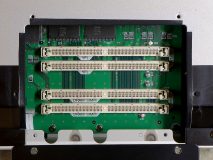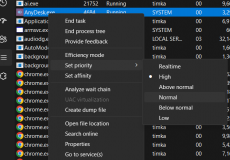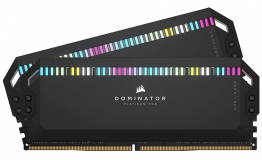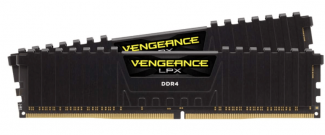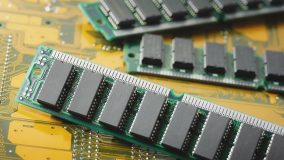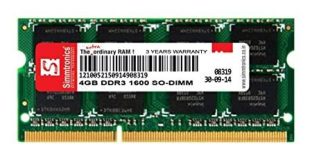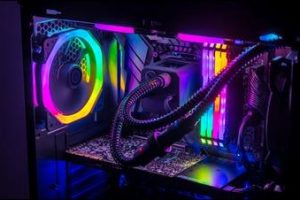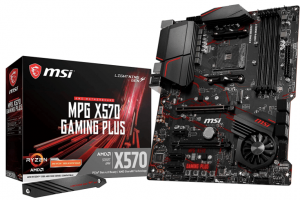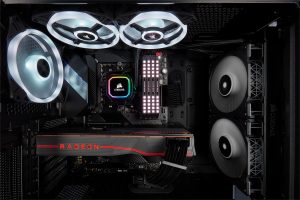The motherboard is an integral component of a computer, and the actual cost of the motherboard can depend on a wide range of factors and parameters. Before you can decide to go with the best motherboard for your existing computer or whether you are building a new computer, it is always quite practical to choose a good motherboard that is reliable enough. But it would be advisable to check out the best price for your motherboard. So, how much does a motherboard cost? Let us check out the cost of the motherboard.
How Much Does a Motherboard Cost?
If you are in the US, the motherboard should cost you between $ 5 to $ 1200 depending upon the type of chipset, type of version, the form factor, data rate, and a host of other factors. If we look at international pricing, the cost would ideally be between $250 to $500, depending on the features and other parameters.
The answer to the question of how much a motherboard costs would be based on a variety of factors. Some of the motherboards cost you around $50 to 60, but the high-end motherboards would generally cost you a price that exceeds $200. The niche motherboards that are specifically created for the specific applications can cost anywhere between $800 to $1000.
How Much Should It Cost To Replace The Motherboard On A Laptop?
The average cost of replacing a motherboard would be between $125 and $11000. The actual price that you would be shelling out would be based on the motherboard you buy and the purpose you are using your motherboard for. The heavy-duty motherboard will need to work with high-end graphics, while the office work device does not need to have that sort of power. It is always practical to buy a motherboard that actually supports your individual needs.
The brand of your computer or device will also affect the cost of the motherboard. The motherboard on a standard computer or laptop will cost less than the motherboard on a Macbook. If you are an expert in fixing a motherboard yourself, it can assist you better.
The average price range for the motherboards from different brands can be summed up in the table here below:
| Brand Name | Price |
| Asus | $500+ |
| Gigabyte | $300-400 |
| Supermicro | $200-500+ |
| Microstar | $100-200 |
| Intel | $800 |
Note: The prices indicated in the table above have been scraped based on the average prices available on E-Commerce services such as Amazon and Flipkart. The actual pricing may vary from one region to another.
Factors That Affect the Price of a Motherboard
What factors affect the price of a motherboard? Before understanding the actual price of a motherboard, it is advisable to have a look at the features that the motherboard offers you.
The cost of the motherboard generally depends on a wide range of factors and components.
The Chipset
The chipset is the heart of the motherboard. It is actually the chipset that defines the build of your PC. The chipset would define the CPU socket on your computer, the amount of PCIe lanes, the PCIe version and the availability of expansion slots are what would define the motherboard.
Both AMD and Intel chipsets come with different chipsets that you can put to perfect use.
The PCIe Lanes
The number of PCIe lanes on a motherboard would decide how expensive a motherboard can be. The number of PCIe lanes is largely dependent on the chipset used on the motherboard.
Check out the table here for information on the number of PCIe lanes on different motherboard models.
| Manufacturer | Chipset | PCIe Lanes | Category |
| Intel | Z690 | 28 – 12 x v4.0 – 16 x v3.0 | High Performance |
| H670 | 24 – 12 x v4.0 – 12 x v3.0 | High Performance (Minus overclocking Support) | |
| B660 | 14 – 6 x v4.0 – 8 x v3.0 | Mid Range | |
| H610 | 12 – 12 x v3.0 | Budget | |
| Z590 | 24 | High Performance | |
| Z490 | 24 | High Performance | |
| B460 | 16 | Mid Range / Mainstream | |
| B560 | 12 | Mid Range / Mainstream | |
| X299 | 24 | Workstation | |
| H510 | 4 | Budget | |
| AMD | X570 | 16 | High Performance |
| B550 | 10 | Mid Range | |
| A520 | 6 | Budget | |
| TRX40 | 16 | Workstation |
The PCIe version
The PCIe version is yet another factor that would define the cost of a motherboard. Motherboards that generally feature the newer PCIe 4.0 and 5.0 versions are found to be more expensive. The newer version of the PCIe version will ensure that you have access to a better performance, but that would increase the cost of the motherboard as well.
The number of expansion slots
The number of expansion slots is yet another factor affecting the cost of the motherboard. You would find the number of PCIe and M.2 slots on the motherboard that can affect the price of a motherboard.
The M.2 slots, which are used for NVMe SSDs, make use of the PCIe lanes. Obviously, a motherboard with 16 PCIe lanes is bound to be more expensive than a motherboard with the 8 PCIe lanes.
VRMs or Phase Power Designs
VRMs or Voltage Regulator Modules are the most important factors that you find quite impressive in determining the quality motherboard and the pricing. The quality, size and amount of the motherboard can go a long way in influencing the cost of the motherboard.
The VRMs help you in terms of offering you a steady power to the processor and RAM. If your motherboard has high-quality VRMs, it will b able to overclock more capably, and that way, it will be able to enjoy a more powerful experience. Of course, that would increase the cost of the motherboard.
Support for overclocking
The support for overclocking can be yet another prime factor that can increase the cost of the motherboard. Not every motherboard supports the overclocking feature. If you need a motherboard that needs to be overclocked, your motherboard cost is bound to increase.
The Z series motherboards from Intel and B and X series motherboards from AMD have been known to offer overclocking functionality. The ability of overclocking is also a factor that can help you affect the price of the motherboard. This can also be dependent on the amount of VRM on the motherboard.
The form factor
The form factor on the motherboard can also be a factor that decides the actual cost of the motherboard. A motherboard comes in three form factors viz full ATX, Mini ITX, and micro ATX motherboards.
The mini ITX motherboards are the smallest and are designed for portable builds. They have been known to be more expensive than their ATX counterparts. The standard ATX is a form factor that has been a great standard for gamers. These motherboards provide higher flexibility and expandability. The Micro ATX motherboards are best suited for budget consumers.
Motherboard Pricing Tiers – An Overview
The pricing of the motherboard will largely be based on different parameters and the tiers of usage.
Entry level motherboards
The Entry level motherboards are available at a price point of $70. They can be a good choice for people who are building a basic PC. The overclocking features may or may not be present. Even when present, they would be quite basic in nature. There are a few extra features available.
Mid-range motherboards
The mid-range motherboards are available at a price range of around $200. They are more targeted toward professionals, gamers, and other similar consumers. RAM overclocking features are available. You would find a few extra features such as Wi-Fi or Bluetooth. You would find more NVMe/PCIe x16 slots.
High-end motherboards
The high-end motherboards are priced around the $350 range. They are best suited for professionals, gamers, and enthusiasts. A high-end CPU overclocking functionality is available on the motherboard. They also provide you with RAM overclocking features. The NVMe/PCIe x16 slot support is another additional option. A few other features, such as Wi-Fi, Bluetooth, Thunderbolt, and 10Gbe, can be availed.
Enthusiast motherboards
These are the most advanced motherboards and have been regarded as the best ones for heavy-duty professionals, gaming enthusiasts, or performance junkies. They are generally priced at $350 or higher. You can expect the best overclocking features on these motherboards. You can also expect the best NVMe/PCIe x16 support. It can also provide you access to a great degree of experience in terms of the best cooling performance.
Why Would a Motherboard Fail?
There can be several reasons why a motherboard would fail. Some of the most common causes that can make a motherboard fail include excessive shock, excess heat, and physical damage.
Power surges can also be a reason that can result in damage to the motherboard. In certain cases, using a faulty peripheral device can cause severe damage to the motherboard and cause it to fry. In most cases, however, the motherboards do not die initially. What I mean is they do not die all of a sudden. You should ideally get a lifespan of at least 5 to 8 years, even in the worst-case scenarios.
Is it Worth it to Replace a Motherboard?
It would be advisable to keep the motherboard on a whip. The motherboard does not die that faster in most of cases. It would be a good idea to replace the motherboard only in the cases where you are upgrading your system. If you are upgrading the components such as CPU and GPU, and your existing motherboard does not support the new components, only such cases would be a good idea to replace the motherboard.
However, replacing a motherboard can be a good choice if it has physical damage or your motherboard is damaged to such an extent that it cannot be repaired. A few such scenarios can be liquid spills and electrical shock hazards. Replacing a motherboard in other situations can be a costly affair, and you would definitely need to consider both the positive and negative aspects of the motherboard replacement.
How to Avoid Replacing a Motherboard?
There are a few precautionary methods that can help avoid the motherboard failure and the subsequent motherboard failure. Some of the ideas that can be practical in this condition include taking care of the following parameters.
- Place enough options for ventilation around your computer
- Use a blower for blowing the dust, hair, and other debris at least once a week
- Always use the system to its optimum capacity. Do not install any heavy apps
- Get the device insured against the damages, if any
- Keep the food and liquid away from the computer. That way, you can prevent the accidental spills.
The Parting Thoughts
How much does a motherboard cost? The pricing will largely be based on several factors. The best option is to look for the features that you are looking to use the motherboard for, list out the tasks that you would be working on, and then pick the motherboard that best meets your individual needs.
Popular motherboards in the budget range are available at $85, mid-range motherboards would cost you $150, and high-end motherboards would be chargeable at $200 to 250.
A Few FAQs
Are refurbished motherboards a good choice?
If you are looking for refurbished motherboards, go with reputable sellers. The motherboard is likely only to die sometimes when a PC begins to die. The other components such as GPU and CPU would die first. That would mean it is advisable to go with a refurbished motherboard.
Why do motherboards vary in price?
The motherboard comes with differential pricing based on the different features that the motherboard is designed for. If you are looking for a motherboard that is designed for high-end gaming performance, the cost would tend to be expensive. The brand would also play a major role in why the motherboard varies in terms of pricing.
How do form factors affect motherboards?
The form factor would be the prime factor that would decide which motherboard would you want to go with. The compatibility and cooling options would be dependent on the form factor alone in most of the cases. The three major form factors would be ATX, microATX, and mini-ITX.
How much should I spend on a motherboard?
The amount that you would be spending on a motherboard would largely be based on a wide range of parameters. The motherboard price list can be dependent on the purpose of your PC and the features that you are looking ahead to.

